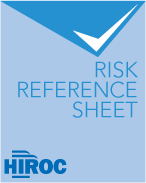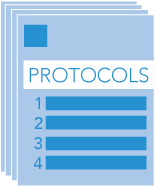Vaginal Birth After Caesarean (VBAC)
CPG No.14: Vaginal Birth after Previous Low-segment Caesarean Section (2021)
A critical review of the research literature on the management of uncomplicated pregnancy in clients who have had a previous low-segment caesarean section.
Vaginal Birth After Caesarean Mobile App for Midwives
Access to information on the risks, benefits and other relevant considerations for clients considering VBAC. Available on the App Store and Google Play.
HIROC's Risk Reference Sheet on VBAC (2018) reviews themes from past incidents and opportunities to avoid similar incidents in the future.
Webinar: From VBAC to TOLAC: The New SOGC Guideline
In July the SOGC published a new guideline on trial of labour after caesarean, replacing their last VBAC guideline from almost 15 years prior. This webinar offers an overview of updates and changes in the July 2019 publication, new research, and what all this mean for midwifery practice.
Webinar: Ethics & Homebirth After Caesarean Section
Choosing to VBAC/TOLAC at home is a client decision that is difficult for many care providers, and midwives are in a position of having unique responsibilities. The concepts of autonomy, beneficence, nonmaleficence and justice can help us to hold in tandem both moral dilemma and support for choice. Using a feminist lens, the presenters will explore caregiver discomfort with client choices, feeling of responsibility to both the birthing person and fetus-to-newborn, and messy hospital relationships in the context of home VBAC. This webinar will help prepare midwives to respond to the question "Why do you let your clients have VBACs at home”?
For Clients: Deciding How to Give Birth after a Caesarean Section
A decision-making tool for clients considering VBAC, providing information and allowing the client to visualize preferences, values and decisional support. This client resource is also available in six other languages.
Sample protocols, submitted by midwifery practices, are available on VBAC for practices to download and adapt. Be sure to tailor the template to reflect current evidence, best practices and practice group / community specific info before use.






